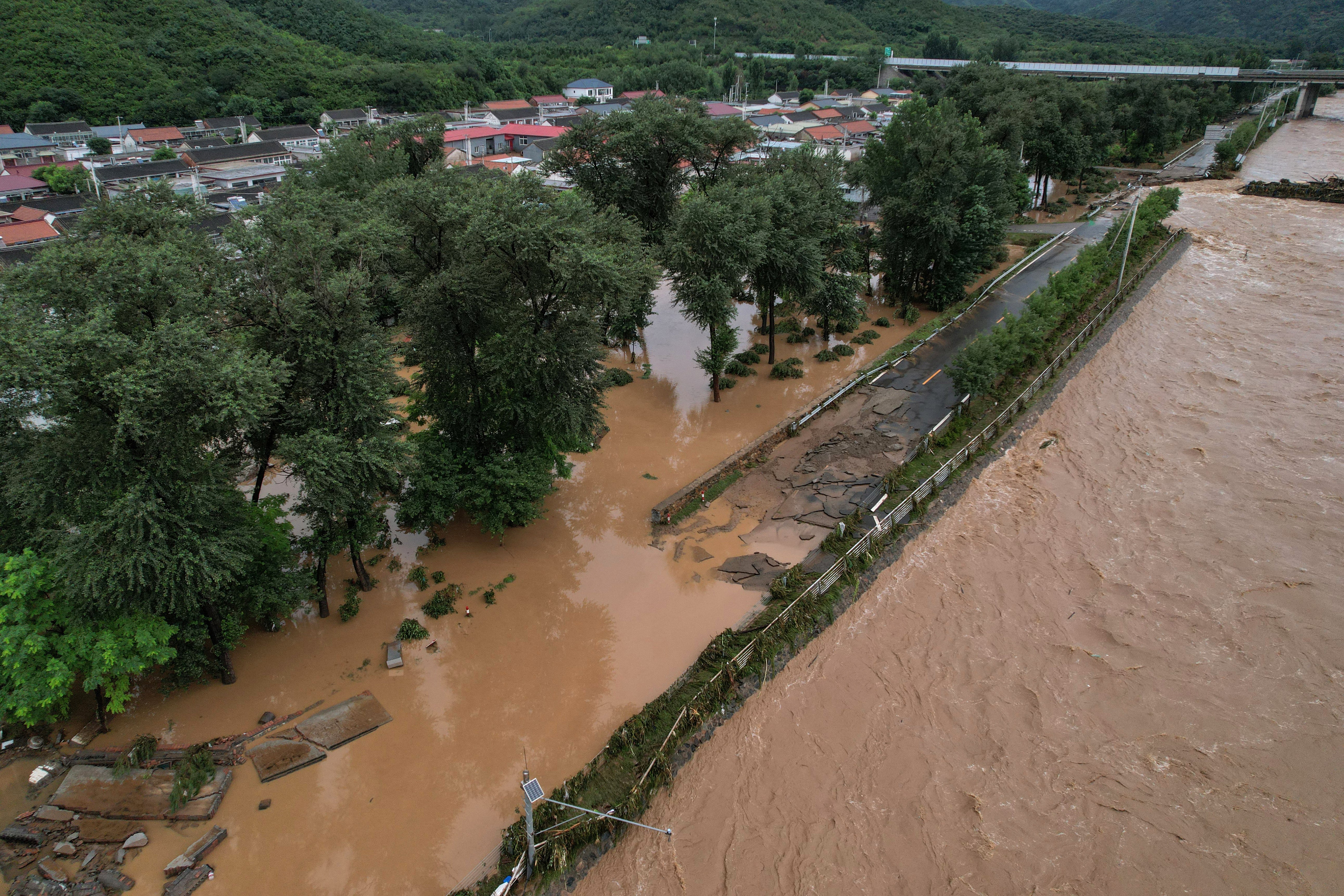Four people died and eight were missing after a landslide triggered by heavy rainfall struck Luanping in northern China’s Hebei province, CCTV reported on Monday.
Rescue efforts were underway, the state broadcaster said.
The landslide followed an intense overnight downpour in Fuping, a county in the industrial city of Baoding, where rainfall reached a record 145mm per hour.
Torrential rainfall intensified across Beijing and surrounding provinces in northern China on Monday, heightening the threat of floods and landslides and prompting the evacuation of over 4,400 residents, authorities said.
Last week, Typhoon Wipha wreaked havoc across China, killing dozens of people, uprooting trees, causing landslides, and leaving thousands without power.
Wipha battered cities such as Yangjiang, Zhanjiang and Maoming with winds of over 118kmph and torrential rain before making landfall in southern Guangdong province last Sunday.
In Beijing’s Miyun district, relentless downpours triggered flash floods, impacting several villages, CCTV said on Monday.
Images shared on China’s WeChat platform showed vehicles drifting along submerged roads, with floodwaters rising high enough to partially engulf residential buildings.
In the early morning of July 27, a 315mm rainstorm in northern Beijing in 10 hours caused severe flooding. The peak of the Miyun Reservoir reached 6,550 cubic meters per second, breaking the local record for the largest flood in history! pic.twitter.com/bQmfz0E2Ys
— Jim (@yangyubin1998) July 27, 2025
Hebei is facing some of its heaviest and most devastating rainfall in recent years, setting off deadly landslides, flash floods, and large-scale evacuations.
Relentless rains began sweeping through Hebei, Tianjin, and Shanxi in northern China in early July, triggering widespread flood warnings. But it is the latter half of the month that has seen the worst of the deluge.
Power outages have impacted over 10,000 residents in the region, according to CCTV.
Northern China in general has faced unprecedented rainfall in recent years, placing densely populated areas like Beijing at heightened risk of flooding.
Some researchers attribute this surge in rainfall, especially in the typically arid north, to the effects of global warming.
The recent storms form part of a broader pattern of extreme weather events linked to the East Asian monsoon, which continues to disrupt daily life and economic activity across the world’s second-largest economy.
Yi County, Hebei Province was hit by extreme rainstorms in the early morning of July 25, with 448 mm of rainfall in 12 hours, triggering a record-breaking flood. pic.twitter.com/etiSdlu4Fa
— Jim (@yangyubin1998) July 25, 2025
Among the hardest hit areas from the latest rainfall was Xiwanzi Village in Shicheng town, near the Miyun reservoir, where authorities relocated more than 100 villagers to a local primary school for shelter, authorities said on Monday.
Authorities in Beijing reported the Miyun reservoir had reached an unprecedented inflow peak of 6,550 cubic metres per second, the highest on record.
Meanwhile, the neighbouring province of Shanxi experienced severe flooding, with state media footage showing powerful torrents sweeping across roads and submerging fields, trees and crops.

In Beijing’s Pinggu district, two sections of a road deemed high-risk were closed off as a precaution.
Emergency crews have been deployed in several cities for rescue operations, including in Datong, where contact was lost with a motorist caught in the floods while driving a Ford, according to the People’s Daily.
China’s water resources ministry has issued targeted flood alerts for 11 provinces and regions, among them Beijing and Hebei, warning of the potential for flash floods from smaller rivers and mountainous runoff.
In response to the crisis, authorities have announced an emergency relief fund to assist Hebei with infrastructure repairs. The money will go towards rebuilding damaged roads, bridges, embankments, and public facilities like schools and hospitals.
In July last year, China’s seasonal “plum rains” – so named for their timing with the ripening of plums – inflicted over $10bn in economic damage.
Nearly 20,000 people evacuated after Chinese city gets year’s rain in just 24 hours
Four dead as Tropical Storm Wipha tears through Thailand, China and into Vietnam
China hit by multiple storms, floods, and heatwaves as Typhoon Wipha makes landfall
The alarming record broken by China as its population tries to keep cool in summer
Court says countries can sue each other for climate damage – this is what to expect
Sculpture inspired by Jane Goodall Barbie doll to be unveiled to public







